Do you have a question about the Sony Ericsson K610i and is the answer not in the manual?
Steps to assemble the phone, including SIM card and battery insertion.
Instructions for powering on the phone and initial setup.
Explanation of standby mode and accessing help within the phone.
Details on activating and using flight mode for sensitive environments.
Guide to making voice and video calls, managing calls, and contacts.
How to access and navigate the activity menu for events and shortcuts.
Instructions for installing PC Suite software for enhanced phone management.
Diagrams and descriptions of the phone's physical components and layout.
Explanation of the function of each key on the phone.
Overview of the phone's main menu categories and features.
Guide to navigating menus and using the navigation key.
Description of icons commonly displayed in the phone's status bar.
Information on using keypad and navigation key shortcuts for quick access.
Methods for entering text, including multitap and T9 Text Input.
Guide to using the file manager for organizing stored files.
Basic procedures for making, receiving, and managing calls.
Instructions for making, receiving, and managing video calls.
Adding, editing, and managing phone and SIM contacts.
Using the call list, speed dial, and voicemail features.
Using voice commands for dialing, answering, and other phone functions.
Managing multiple calls, call waiting, diverting, and conference calls.
Using tone signals, notepad, number visibility, and call time features.
Creating and managing groups for contacts and messaging.
Writing, sending, and receiving text messages, including templates.
Creating, sending, and receiving picture messages.
Recording and sending sound recordings as voice messages.
Setting up and managing email accounts for sending and receiving emails.
Connecting and communicating with friends online via the My friends service.
Taking pictures and recording video clips using the phone's camera.
Adjusting camera settings like zoom, brightness, shoot mode, and effects.
Editing pictures using the PhotoDJ™™ application.
Sending camera pictures to publish in an online blog.
Viewing, using, and managing pictures and video clips.
Changing the phone's appearance by selecting or creating themes.
Playing music and video files on the phone.
Moving music, videos, and playlists to the phone using PC software.
Purchasing and downloading music tones and content.
Selecting, setting, and managing ringtones and melodies.
Composing and editing custom melodies for ringtones.
Composing and editing video clips, pictures, and text.
Recording sounds for voice memos or as ringtones.
Downloading and running games and Java™™ applications.
Configuring phone settings and accessing the Internet.
Managing bookmarks and using Internet keypad shortcuts.
Subscribing to and reading RSS feeds for updated content.
Synchronizing phone data with a computer or online services.
Connecting and communicating with other Bluetooth devices.
Transferring files via USB cable or Bluetooth, and managing sound.
Setting and managing alarms for specific times or days.
Managing appointments, calendar entries, and tasks.
Using the notepad, timer, and stopwatch functions.
Using the calculator and managing security codes in the code memo.
Managing phone profiles and setting time and date.
Configuring SIM card lock, phone lock, and keypad lock.
Addressing general issues like memory capacity and phone performance.
Troubleshooting steps for power, charging, and language issues.
Resolving problems with SMS, MMS, Internet, and Bluetooth connectivity.
Solutions for synchronization and file transfer issues with a computer.
Interpreting and resolving common error messages like 'Insert SIM'.
Details on accessing Sony Ericsson support, websites, and call centers.
Recommendations for safe use of the phone, battery, and accessories.
Information on potential health effects, driving safety, and battery disposal.
Details on radio frequency exposure and Specific Absorption Rate (SAR).
End User License Agreement, Limited Warranty, FCC Statement, and Declaration of Conformity.
| Announced | 2006, February |
|---|---|
| Status | Discontinued |
| Network | GSM / UMTS |
| 2G bands | GSM 900 / 1800 / 1900 |
| 3G bands | UMTS 2100 |
| Speed | Yes, 384 kbps |
| GPRS | Class 10 |
| EDGE | Class 10 |
| SIM | Mini-SIM |
| Display Type | TFT, 256K colors |
| Display Size | 1.9 inches |
| Display Resolution | 176 x 220 pixels |
| Internal Storage | 64 MB |
| Camera | 2 MP |
| Video | Yes |
| Alert types | Vibration; Downloadable polyphonic, MP3 ringtones |
| Loudspeaker | Yes |
| 3.5mm jack | No |
| WLAN | No |
| Bluetooth | 2.0, A2DP |
| GPS | No |
| Radio | FM radio |
| Games | Yes |
| Java | Yes, MIDP 2.0 |
| Stand-by | Up to 400 h |
| Talk time | Up to 7 h |
| USB | USB 2.0 |
| Messaging | SMS, MMS, Email |
| Browser | WAP 2.0/xHTML |
| Colors | Black, White |
| Operating System | Proprietary |
| Memory Card slot | Memory Stick Micro (M2) |
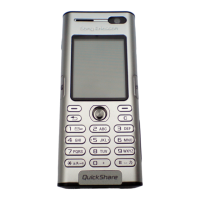
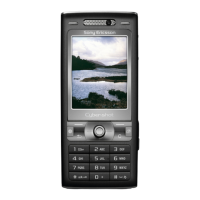
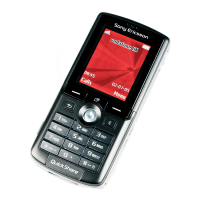

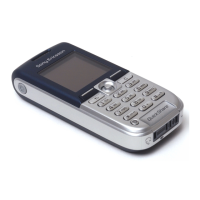

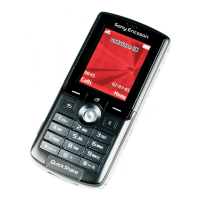
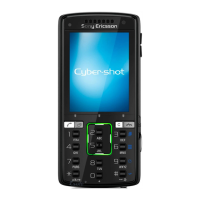
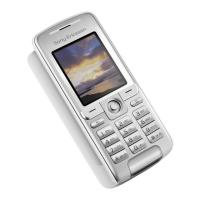
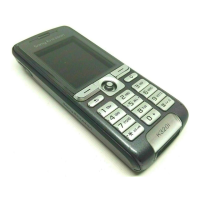
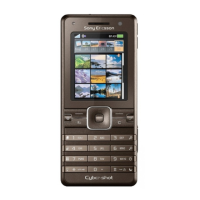
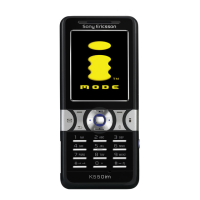
